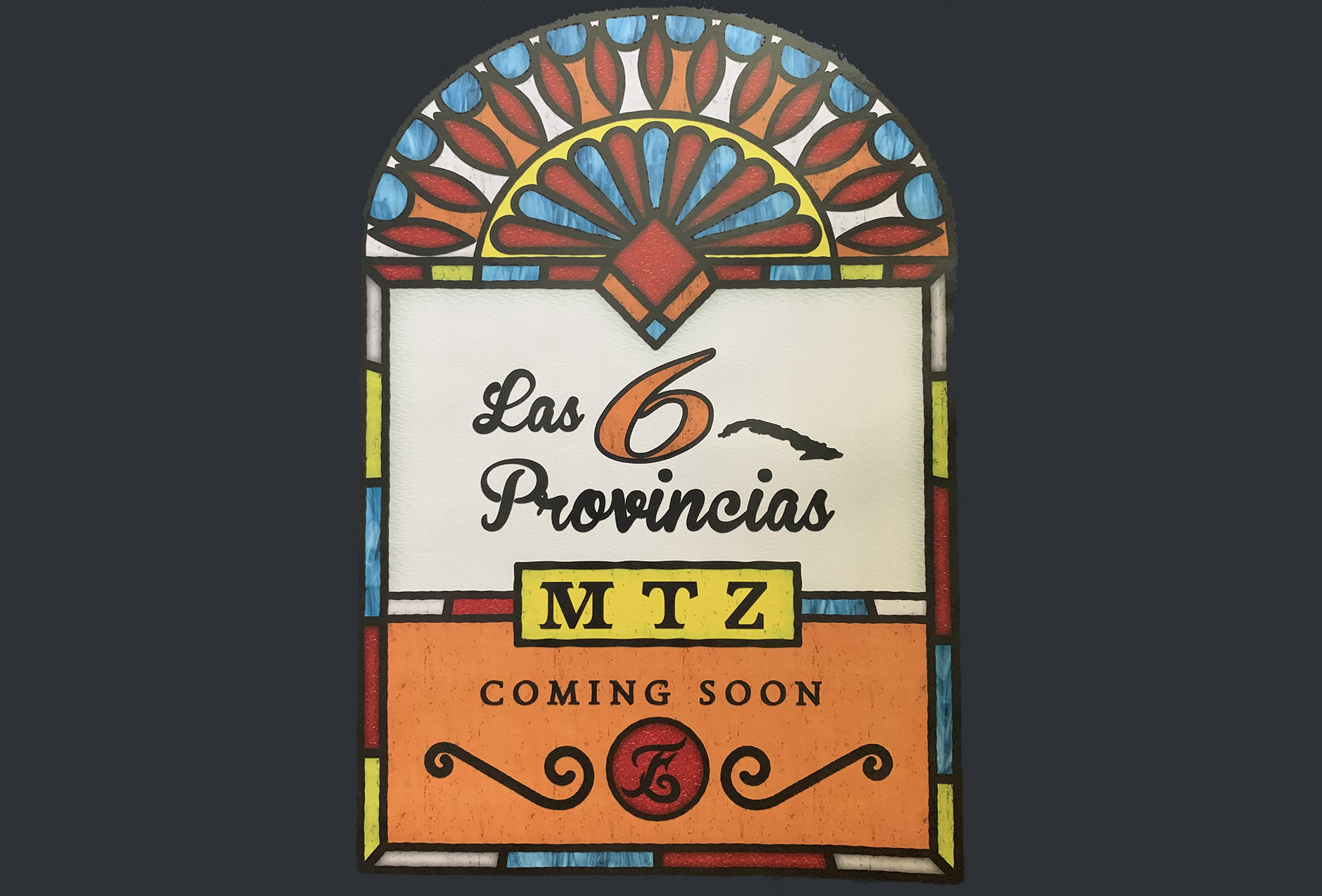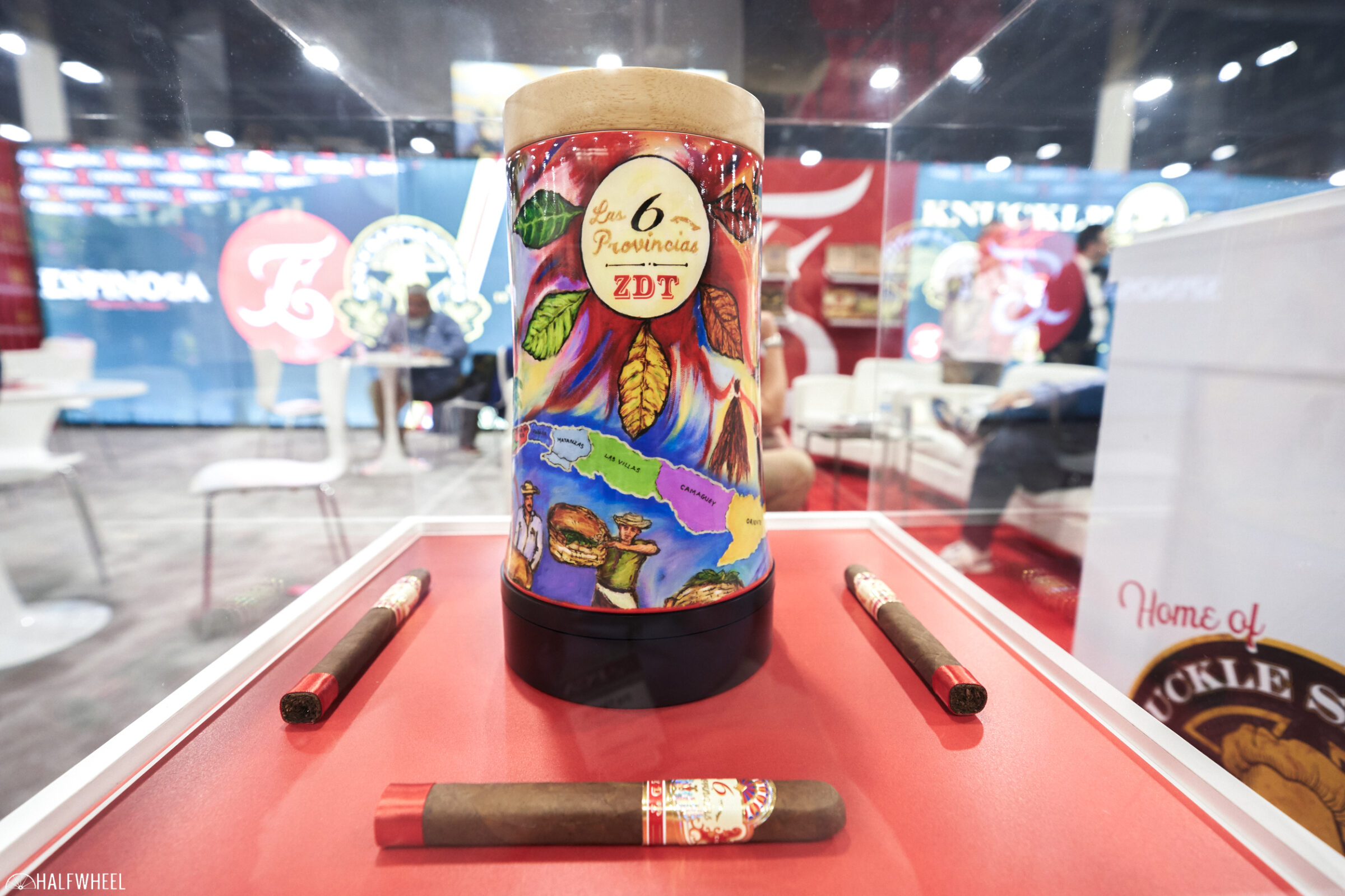In 2018, Espinosa Premium Cigars debuted the first release in an ambitious series of cigars that will eventually number six different blends, each named after one of the original six provinces of Cuba that were created by the Spanish colonial government in 1879: Camagüey, La Habana, Las Villas, Matanzas, Oriente, and Pinar del Río. Known as Las 6 Provincias—Spanish for The 6 Provinces—each of the cigars in the series takes inspiration from one of the six original provinces, which extends to the unique packaging of each cigar.
For the five releases so far, each cigar’s packaging has included imagery designed by Cuban-born artist Edin Gutierrez, who is based in South Florida and has also worked with Espinosa on the company’s Warzone.
The boxes of the five cigars released in the series so far have been different, ranging from a swinging box, a box made to look like house windows that included hand-painted artwork on top designed to look like stained glass, a curio cabinet-esque box holding 10 cigars packaged in individual coffins and a box with an art canvas in the lid that also includes a pair of wings that extend out its sides.
Last November, Espinosa started shipping the latest release in the series named Las 6 Provincias ZDT, which honors the province of Pinar del Río on the western end of the island. The acronym stands for Zona de Tabaco, which is a reference to Pinar de Río being the province where premium cigar tobacco is grown in Cuba.
“This is really a passion project for me, my son, and the team; we have been creative with this project since the beginning,” said Erik Espinosa in a press release. “This year’s project is simply beautiful.”
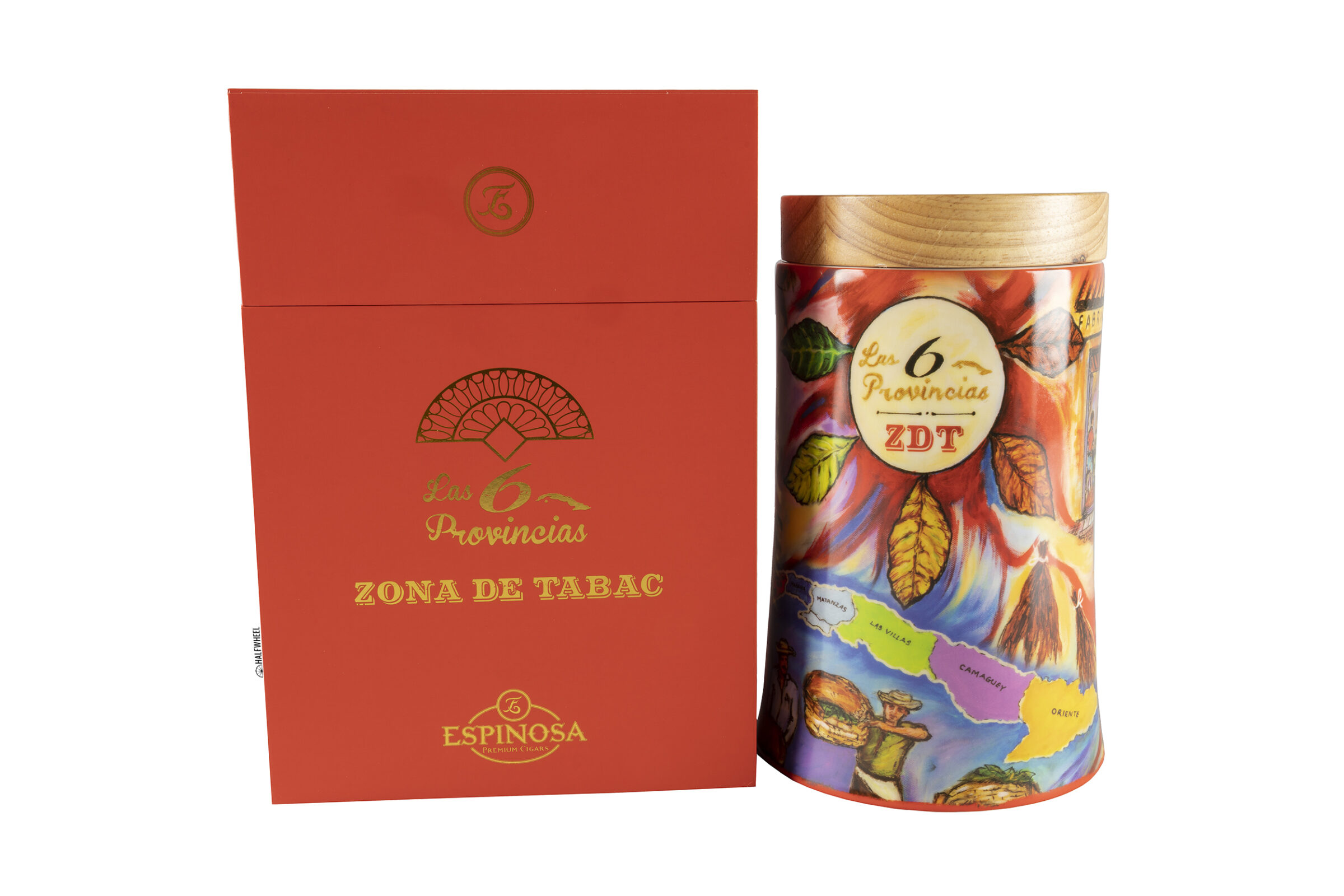
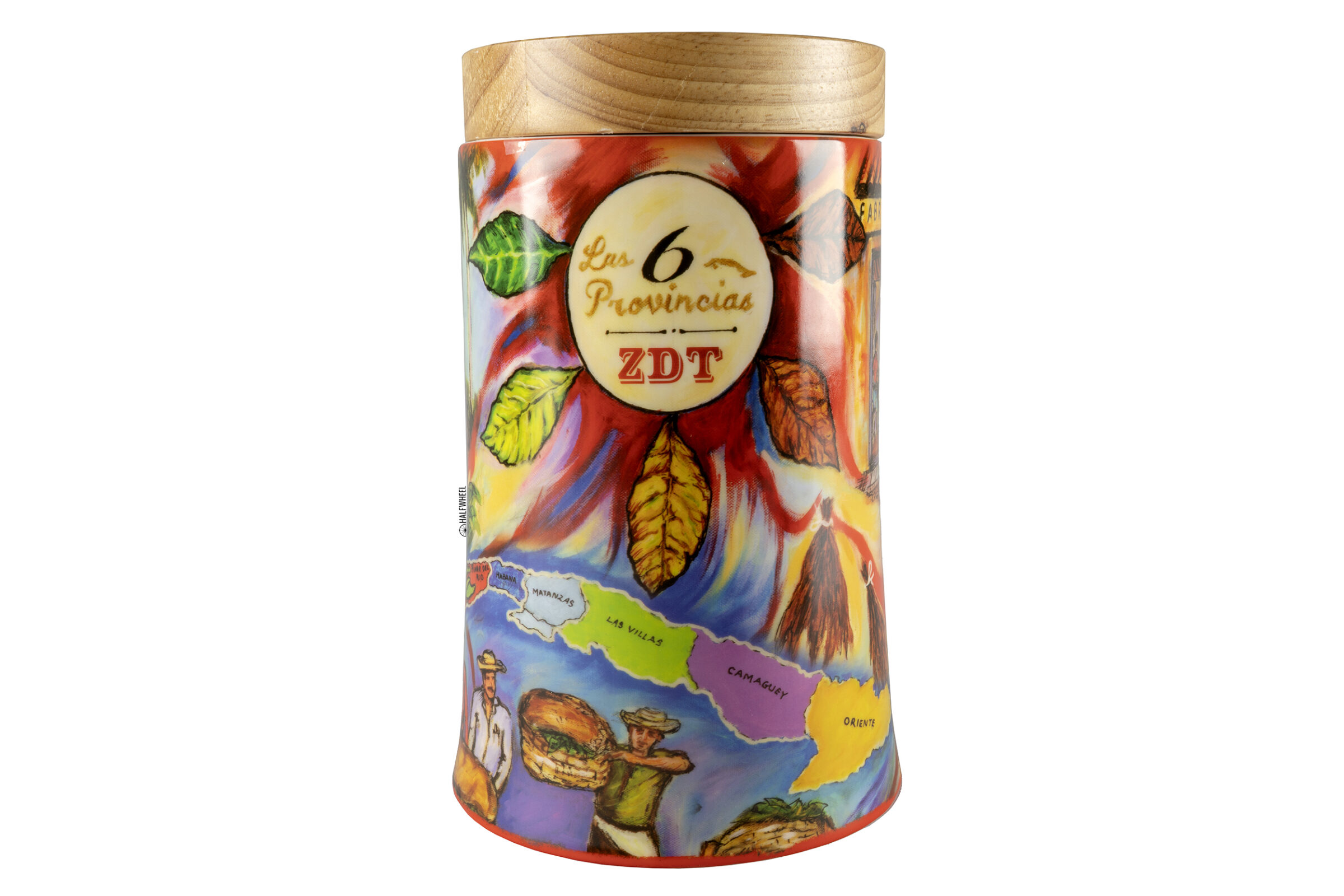
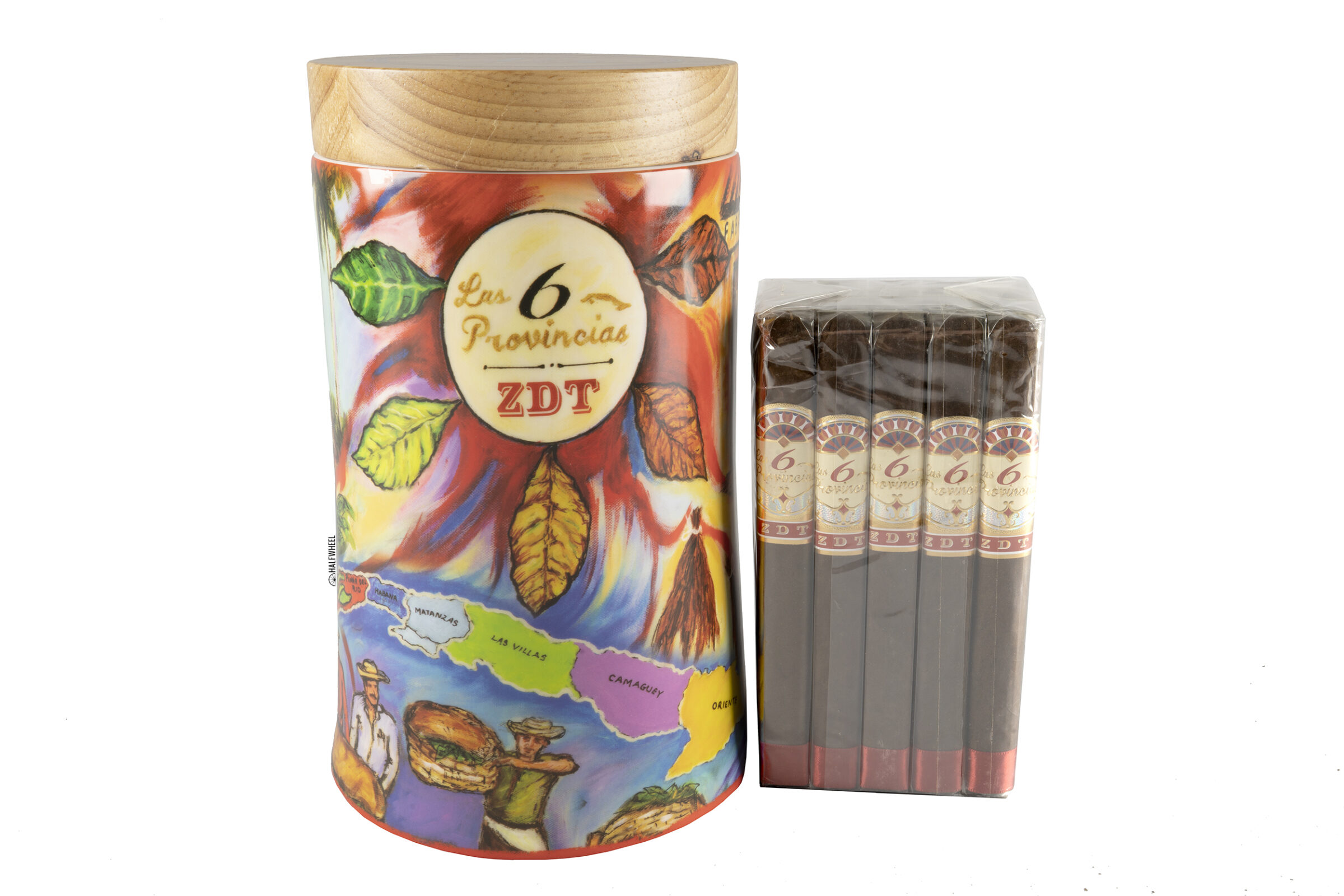
Blend-wise, the ZDT is made with a Nicaraguan corojo wrapper covering binder and filler tobaccos that were also grown in Nicaragua. As with the rest of the entries in the series so far, there is only one size—this year, a 6 1/2 x 48 short Churchill priced at $18 each—and the cigars are being produced at the San Lotano Factory in Ocotal, Nicaragua.
The ZDTs come packaged in a 20-count ceramic jar featuring artistic renderings of the cigar-making process created by the aforementioned Gutierrez. The jar shows an artistic interpretation of the different steps that are taken in the cigar-making process: from tobacco growing in the field before being harvested, processed, and eventually rolled into a cigar.
Note: The following shows the various Espinosa Las 6 Provincias vitolas. Some of these cigars may have been released after this post was originally published. The list was last updated on March 29, 2024.
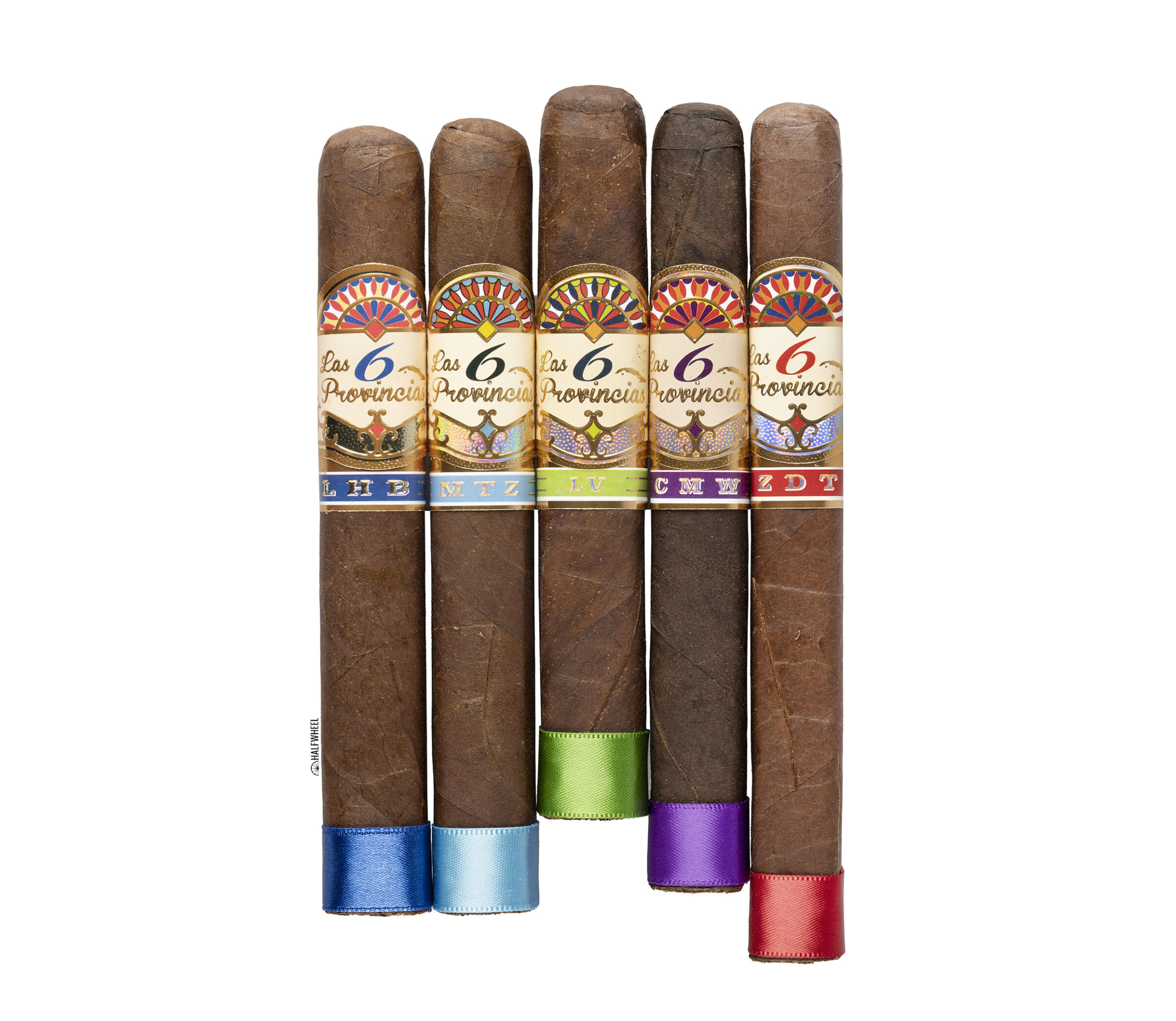
*Not pictured
88
Overall Score
Since it debuted in 2018, I have become a huge fan of Espinosa’s Las 6 Provincias series, not only because of the different unique packaging but the different blends as well. On the positive side, the newest addition to the series is nicely balanced and is also extremely well-made from a construction standpoint, with excellent draws, plenty of smoke and burn lines that—while never totally straight—never needed correcting. Having said that, the main flavors of coffee beans, earth, and leather were not very dynamic and never budged from the top of the profile. In addition, the retrohale would benefit from having more of the salted caramel sauce flavor in order to combat the amount of black pepper that is present throughout. In the end, the Espinosa Las 6 Provincias ZDT is a nice addition to the line and is packaged in an amazing jar, but if you are looking for the best blend in the series so far, I would track down the Las 6 Provincias CMW.

- Cigar Reviewed: Espinosa Las 6 Provincias ZDT
- Country of Origin: Nicaragua
- Factory: San Lotano Factory
- Wrapper: Nicaragua (Corojo)
- Binder: Nicaragua
- Filler: Nicaragua
- Length: 6 1/2 Inches
- Ring Gauge: 48
- Vitola: Short Churchill
- MSRP: $18 (Jar of 20, $360)
- Release Date: November 2023
- Number of Cigars Released: Undisclosed
- Number of Cigars Smoked For Review: 3
Visually, the Espinosa Las 6 Provincias ZDT has a number of attractive qualities: the dark brown wrapper has an obvious tint of red to it, is extremely oily, and is silky smooth to the touch. There are some noticeable veins running up and down the lengths of each cigar, but none protrude all that much, and the cigars are quite firm when squeezed. Aromas from the wrappers are very similar, with a sweet woodiness note leading earth, creamy nuts, dark chocolate and barnyard. Scents from the feet are less sweet overall, with gritty earth, generic wood, leather, baker’s spices and raisins all vying for position. Finally, after straight cuts, the cold draws bring flavors of sweet oak, cinnamon, leather tack, black pepper and milk chocolate sweetness.
Blasts of spice and black pepper—on my tongue and on the retrohale, respectively—are the first things I notice after lighting the feet of the Espinosas, while a strong powdery cocoa nibs flavor joins in almost immediately. All three aspects remain on the forefront of the profile for nine puffs, but after that main flavors of coffee beans and gritty earth take over the top spots. Secondary flavors of sourdough bread, oak, cinnamon, barnyard and peanuts are present in various amount for all three cigars, while two of the cigars—my first and final ones—feature a light floral note on the finish. There is plenty of black pepper on the retrohale, along with a salted caramel sauce note, although the pepper is definitely stronger than the sweetness at this point in the cigar. Flavor ends the first third at medium-plus, while both the body and strength lag a bit behind at a solid medium. Construction-wise, the draws and smoke production give me no issues at all, and while the burn line on all three cigars is far from razor sharp, none need to be corrected as of yet.
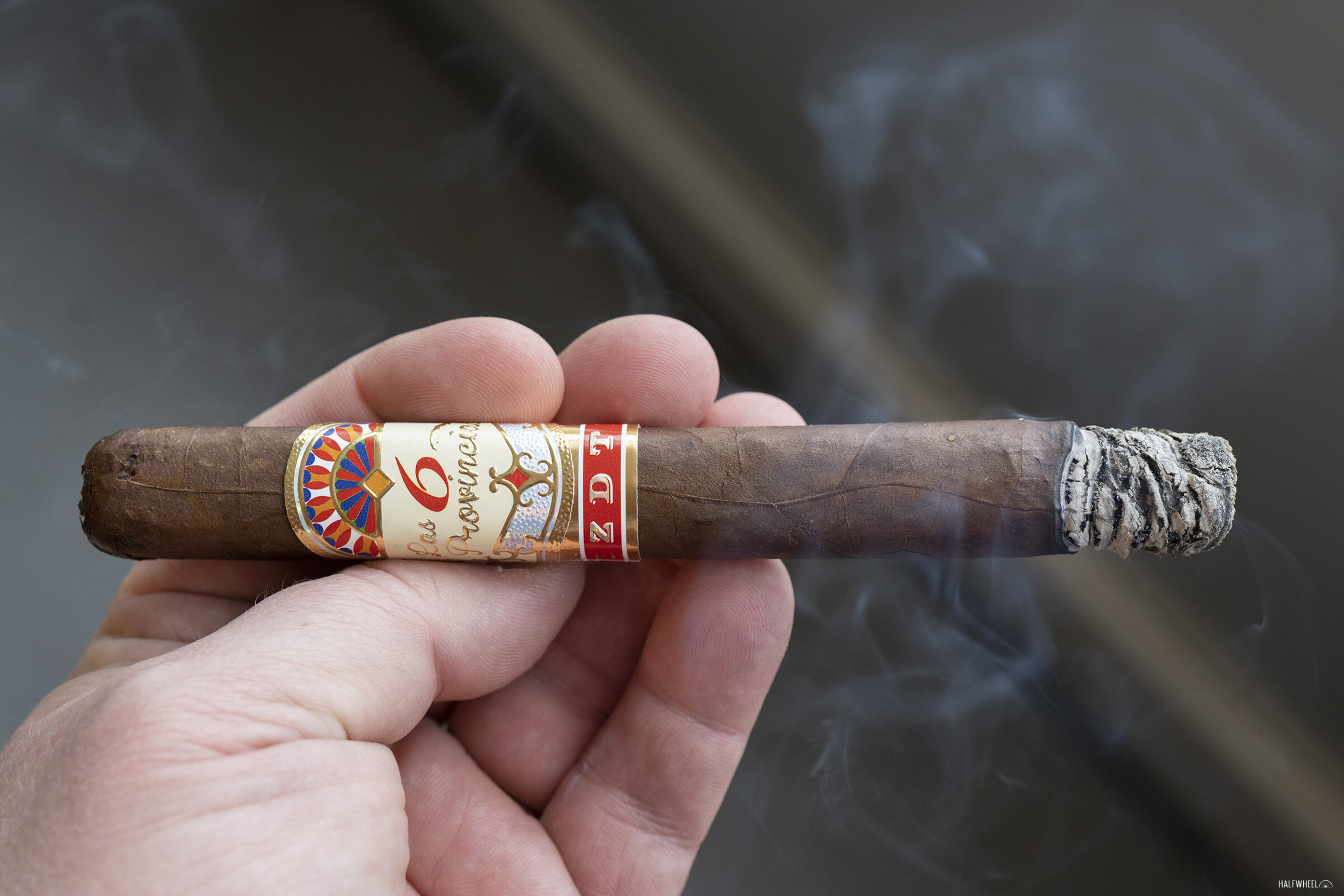
There is very little change in the profile of the cigar during the second third, as the combination of gritty earth and coffee beans remains easily on top, followed by notes of dry hay, plain oatmeal, generic nuttiness, baker’s spices and slight creamy oak. Thankfully, there is a bit less black pepper on the retrohale, and while I can taste more of the caramel sauce sweetness, it is still far from becoming a major note in the profile. The flavor stays put at medium-plus, and the body does not budge from a solid medium, but the strength does reach medium-plus by the time the second third finishes. The three aspects of the construction continue along their same paths as well: great draws, plenty of thick, gray smoke and burn lines that are wavy but not problematic enough to need attention from my lighter.
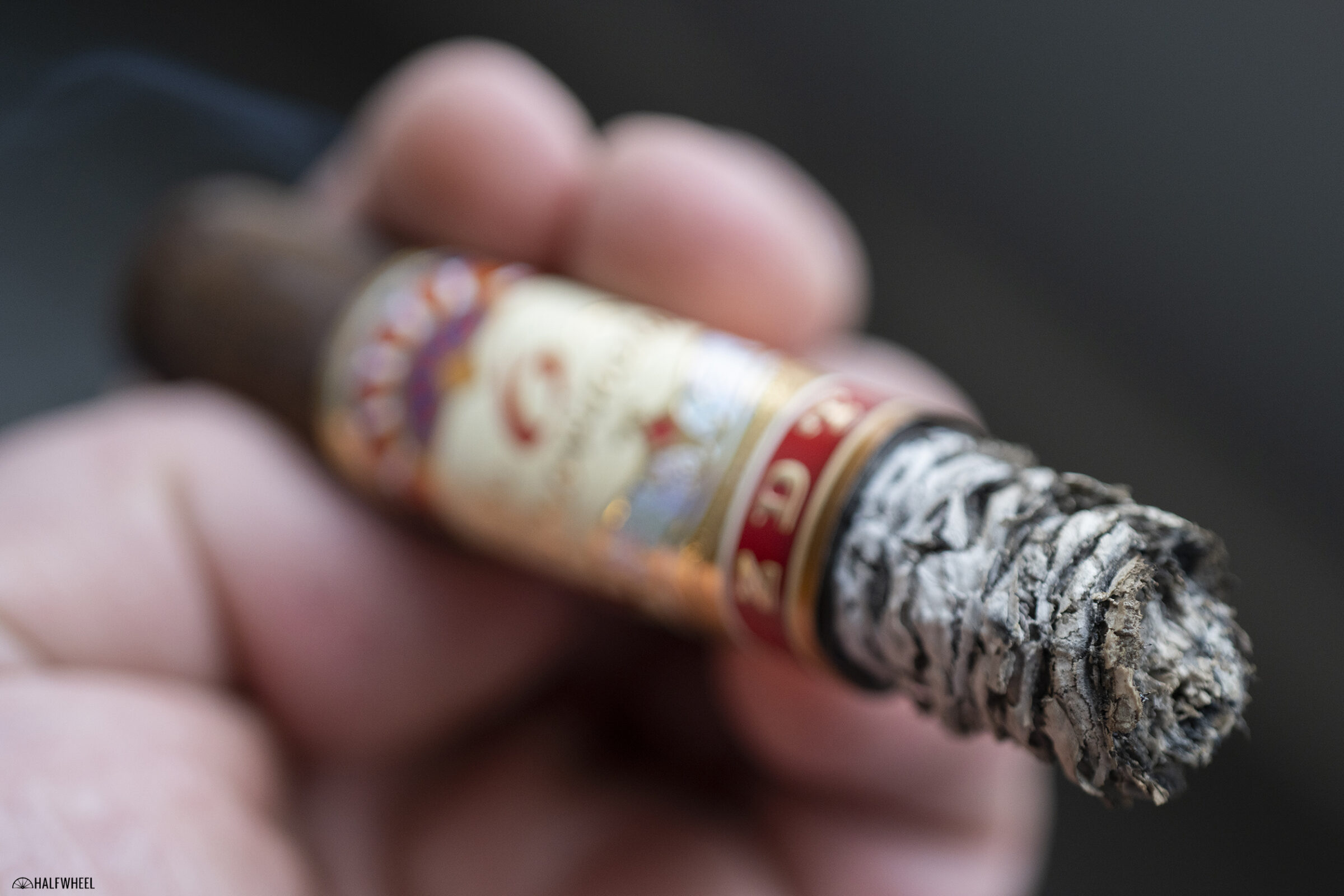
The same combination of coffee beans and earth continues to dominate the profile of the Las 6 Provincias ZDT during the final third. While additional flavors of cinnamon, leather tack, toasted bread, oak, hay and light lemongrass do their best to rise to the top, all fall far short. There is also very little change in the retrohale where black pepper continues to lord over the caramel sauce sweetness. The flavor ends the cigar where it started at medium-plus, but the body increases to a point just over the medium mark, and the strength manages to creep into the medium-full range, albeit barely. Finally, the construction does not change either, with wavy burn lines that never become enough of an issue to need correcting, copious amounts of smoke and excellent draws until I put the nubs down with about an inch remaining.
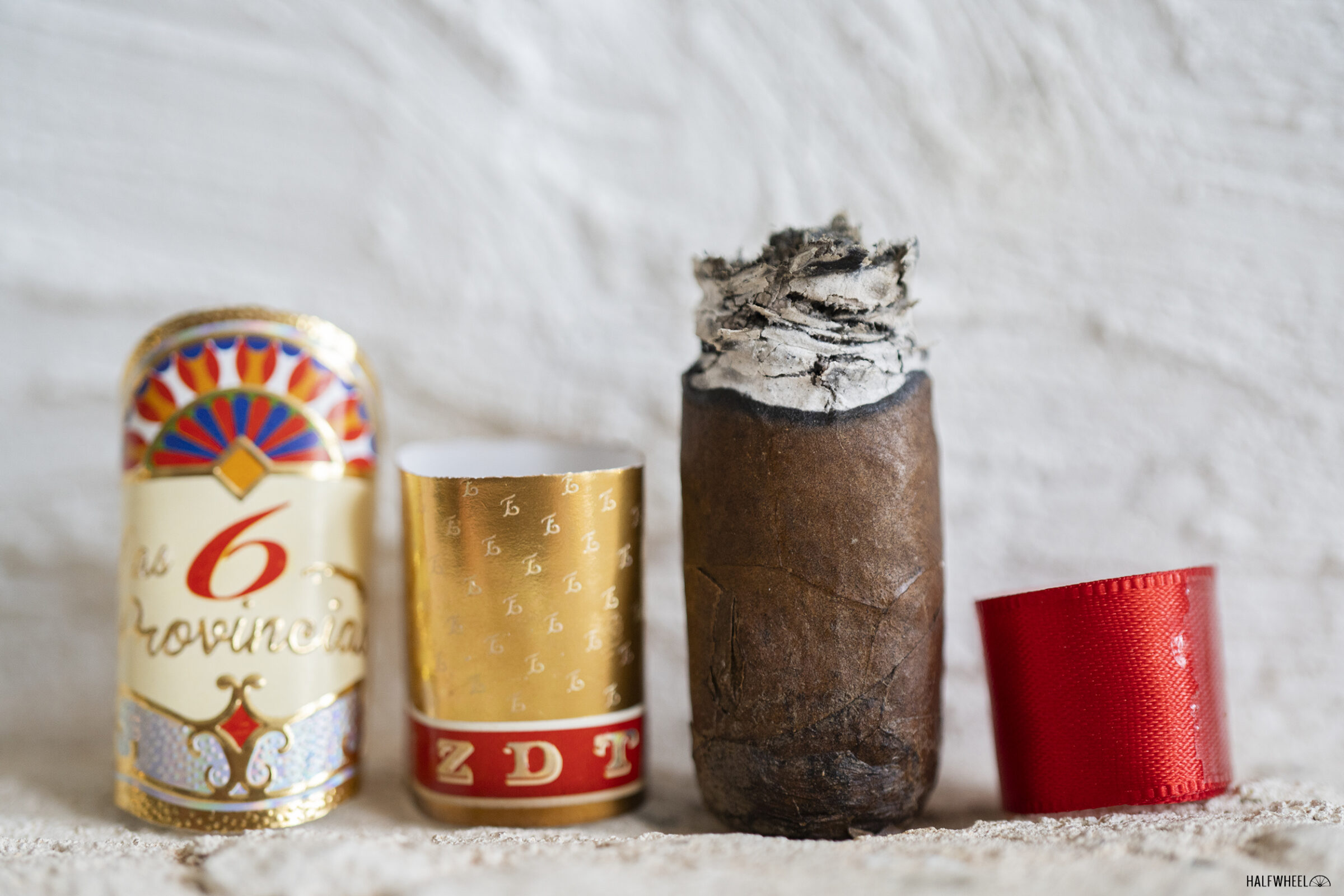
Final Notes
- Currently, there are 15 different provinces on the island of Cuba; however, only four of those have the same names as one of the original six, and the areas that they cover are different.
- Oriente—which is located on the eastern end of the island—is a good bet to be the sixth and final installment in the line.
- There is quite a bit of aggressive pepper and spice present during the first few puffs, and while both calmed down after about 10 puffs, they remained prominent for the first third.
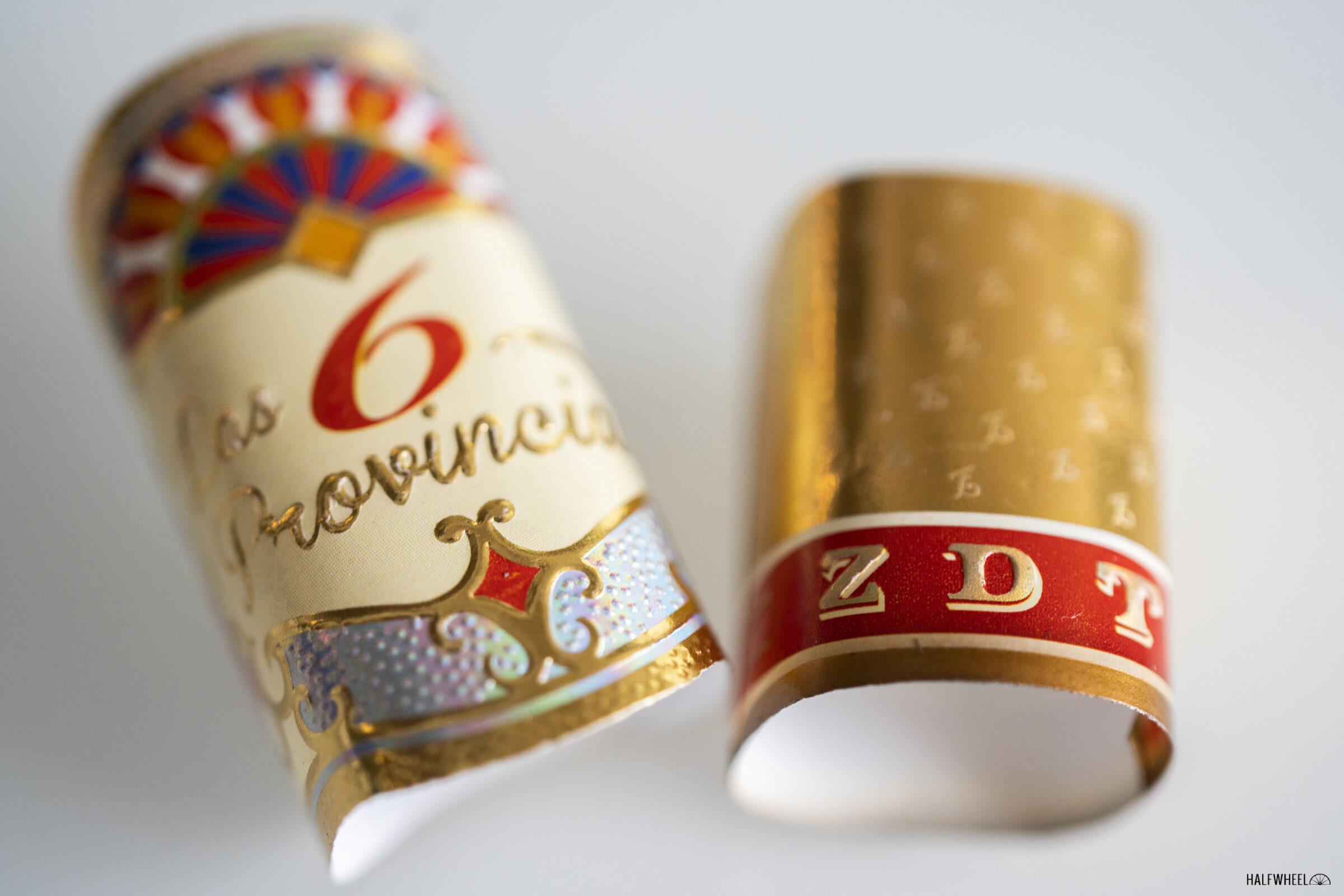
- Although it is not overly obvious until you take them off, there are actually two bands on this cigar (not counting the foot ribbon) as you can see from the photograph above.
- As mentioned above, the packaging for each one of the cigars in this series so far has been extremely memorable. Four of the releases have placed on halfwheel’s annual Top 10 Packaging Awards. Those include second place in 2018, fourth place in 2019, eighth place in 2021, and ninth place in 2022.
- While the burn line was rarely straight, I never came close to needing to correct it on any of the three cigars I smoked for this review, and the draws and smoke production were excellent.
- The cigars smoked for this review were purchased by halfwheel.
- Final smoking time for all three cigars averaged out to one hour and 28 minutes.
- If you would like to purchase any of the Espinosa Las 6 Provincias ZDT cigars, site sponsors Atlantic Cigar Co., Cigars Direct and SmokingPipes have them in stock on their respective websites.
88
Overall Score
Since it debuted in 2018, I have become a huge fan of Espinosa’s Las 6 Provincias series, not only because of the different unique packaging but the different blends as well. On the positive side, the newest addition to the series is nicely balanced and is also extremely well-made from a construction standpoint, with excellent draws, plenty of smoke and burn lines that—while never totally straight—never needed correcting. Having said that, the main flavors of coffee beans, earth, and leather were not very dynamic and never budged from the top of the profile. In addition, the retrohale would benefit from having more of the salted caramel sauce flavor in order to combat the amount of black pepper that is present throughout. In the end, the Espinosa Las 6 Provincias ZDT is a nice addition to the line and is packaged in an amazing jar, but if you are looking for the best blend in the series so far, I would track down the Las 6 Provincias CMW.
I have been smoking cigars for over eight years. A documentary wedding photographer by trade, I spent seven years as a photojournalist for the Dallas Morning News and the Fort Worth Star Telegram. I started the cigar blog SmokingStogie in 2008 after realizing that there was a need for a cigar blog with better photographs and more in-depth information about each release. SmokingStogie quickly became one of the more influential cigar blogs on the internet, known for reviewing preproduction, prerelease, rare, extremely hard-to-find and expensive cigars. I am a co-founder of halfwheel and now serve as an editor for halfwheel.










